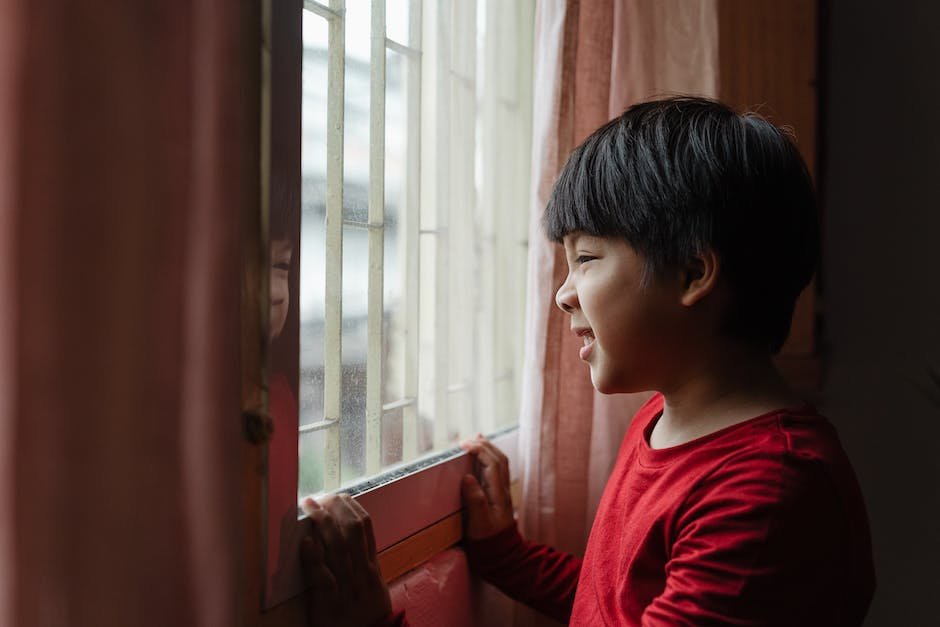
Imagine experiencing the scent of a freshly baked pie in an entirely different and possibly overwhelming way, or feeling disoriented by a fragrance that others barely notice. Such is the intricate world of sensory perception for those with autism, particularly when it comes to the nuanced realm of olfaction. The olfactory system, a direct pathway to the brain’s emotional and memory centers, can present unique challenges and experiences for individuals on the autism spectrum. As the general public yearns to understand these complexities, delving into the sensory world from the perspective of those with autism can offer invaluable insights.
Understanding Autism and the Sensory System
Unraveling the Sensory Threads: Understanding Sensory Processing in Autism
Hey there, lovely folks! Ever watched in awe as a child explores the world through touch, taste, sight, sound, and smell? It’s like witnessing a grand adventure into the unknown. Now imagine if these sensory experiences, which often bring joy and amazement to many children, feel quite different for those with autism. In the vibrant tapestry that is human sensory processing, the threads are woven uniquely for each individual, especially so for someone on the autism spectrum.
For our dear ones with autism, the senses don’t play by the same rules we might be used to. Think of sensory processing as the brain’s way of organizing and responding to all the information our senses pick up. For most, this process is smooth sailing. However, for those with autism, it can be like trying to decipher a foreign language without a translator.
In simplest terms, some individuals with autism may experience hypersensitivity – where even the gentlest whisper can sound like a shout or a tag on a shirt feels like a cactus. This heightened intensity of the senses can be overwhelming, leading to what many refer to as a ‘sensory overload.’ It’s like all the dials are turned up to eleven, and every sensation is fighting for the spotlight.
On the flip side, we have hyposensitivity – a reduced sensitivity to sensory inputs. Imagine not feeling the burn of a hot cup or not being startled by a loud fireworks display. In this scenario, the world can seem muted or distant, and seeking out stronger sensory stimulation becomes the norm for some individuals with autism.
Now, it’s not just about being more or less sensitive. Sensory processing in autism can also involve challenges with sensory discrimination – distinguishing between different aspects of the sensory experience. It’s like trying to pick out a friend’s voice in a bustling crowd; everything blurs into a singular hum. For a child with autism, discerning between similar textures or predicting where their body is in relation to objects in the room might not come intuitively.
Did you know there’s also a sensory aspect to social interactions and communication? Unraveling non-verbal cues or the subtleties in tone of voice might feel like deciphering an elaborate dance routine with complicated steps. For children with autism, this part of the sensory tango can feel especially perplexing.
It’s sort of magical, isn’t it? To think of how uniquely each child experiences the world around them. The sheer variety is enough to make us take a step back and marvel. Here’s where we, as parents, caregivers, and friends, step in with our wands of compassion and understanding. Creating a nurturing environment tailored to each individual’s sensory needs is more of an art than science, where patience and observation are key.
Whether we’re adjusting lights in a room, exploring various textures in play, providing quiet spaces, or using weighted blankets, our goal remains the same: to give every child the most comfortable seat from which they can explore their world. Remember, each child is like a little explorer, and with the right guidance, they can unravel and understand the sensory wonders that surround them.
Just like in a community garden, it takes many hands to nurture and appreciate the diverse growth around us. Each child, with their unique sensory processing, adds vibrant color and texture to our human garden. Let’s continue to embrace these differences, provide support, and watch in awe as every child blossoms in their own extraordinary way.

The Impact of Smell Sensitivity on Daily Life
Sniff, Sniff, Hooray? Navigating Heightened Smell Sensitivity in the Home
If there’s one thing that every homemaker knows, it’s that the scents wafting through our homes can be just as significant as the decor when it comes to creating a comforting environment. But when a family member has a heightened sense of smell, everyday odors become a bigger deal, souring even the sweetest home atmosphere.
For those with an enhanced olfactory prowess, a kitchen’s typical smells—think onions sizzling or coffee brewing—can transform a culinary space from a place of nurturing into a zone of discomfort. Navigating meal preparation may include finding alternative cooking methods that produce less odor or investing in air purifiers and exhaust fans to whisk away smells quickly.
Cleaning routines may also require a second look. Common household cleaners, while effective, often come with strong fragrances. Families may need to switch to fragrance-free options or natural cleaners like vinegar and baking soda that are less likely to overwhelm sensitive noses.
Personal care is another realm where sensitivity to scent can cause a daily disturbance. It could mean waving goodbye to strong perfumes, colognes, and scented lotions. Instead, opting for unscented body products can become the new normal to maintain peace in a sensitive-smelling household.
Home-based work or homework times are not immune to these olfactory obstacles either. A family member who’s sensitive to smells might find it hard to focus if there’s a strong scent nearby. This means setting up workspaces in areas of the home that are less trafficked and more controlled in terms of ambient odors.
Even leisure time isn’t left untouched. Family movie nights, for example, could be interrupted by the scent of buttery popcorn, which, while delightful to some, can be overpowering to others. It may require finding new, less aromatic snacks to enjoy while binge-watching the latest family favorite series.
In conclusion, heightened smell sensitivity can turn the simplest of daily routines into a challenging odyssey through a world filled with potential nasal nuisances. By being mindful of the scents in our homes and making thoughtful adjustments, families can carve out a fragrance-sensitive space that’s comfortable for everyone. After all, it’s the love and laughter that truly make a house a home, not the smell of freshly baked cookies (as delicious as they might be).

Assessing and Supporting Olfactory Challenges
Understanding children with autism comes with the realization that every experience can significantly affect them, especially when it’s related to their senses. Olfactory challenges, in particular, can present a unique array of hurdles in a child’s daily life. Here are some additional strategies to ease these challenges, ensuring our little ones can thrive in their environments.
One often-overlooked aspect is the selection of toys and materials that children come into contact with. Opt for items that do not have strong smells, as this will help children to play and learn without being overwhelmed. Non-scented playdough and unscented markers are widely available and are great alternatives to their more fragrant counterparts.
In the realm of mealtime, olfactory challenges can make food choices and dining experiences particularly tricky. Parents should introduce new foods gradually, combining them with more familiar, muted smelling options, making the experience less intense. Keep meals simple and avoid strong-smelling seasonings or foods with pungent odors, like fish or certain cheeses, unless you know that your child tolerates them well.
When it comes to outings and public spaces, one strategy might be to have a ‘scent kit’ handy. This can include items like a favorite blanket or cloth with a comforting, familiar scent or a small container of coffee beans or tea leaves that can offer a pleasant smell to distract from overwhelming odors. This empowers children to have something to turn to when feeling overwhelmed by the scents around them.
Building a support network with fellow parents can be a game-changer. Through community groups, both online and in the neighborhood, parents can share tips and learn from each other’s experiences, fostering not only a sense of understanding but also ensuring that their children have understanding playmates.
Don’t forget to involve siblings and close family members in these strategies. When the whole family understands the importance of maintaining an accommodating environment, it not only lessens the occurrences of stressful situations but also reinforces a supportive family structure that celebrates each member’s individual needs.
Finally, while adjustments and adaptations are vital, it is equally important to gently expose children with autism to various smells in a controlled and reassuring way. This can help them build the ability to cope with less familiar or more intense odors over time. Remember, patience is key, and any progress is a step in the right direction.
Together, with love and little adjustments to the environment, life can be made much more pleasant for children facing olfactory challenges. It’s all about creating a nurturing atmosphere where every member of the family, no matter their sensory needs, can feel secure, happy, and understood.

Creating a Smell-Safe Environment
Creating a Comforting Environment at Home for Children with Smell Sensitivities
Creating a comforting and accommodating environment for children with smell sensitivities can be a unique challenge for families. These children’s heightened sensitivity can turn an ordinary home atmosphere into an overwhelming experience. Here are actionable insights for families looking to create a serene home for their little ones sensitive to scents.
- Evaluating Household Products: Dive into the labels of all household products, from laundry detergents to fabric softeners. Opt for those that are explicitly labeled as fragrance-free. Avoid confusing terms like “unscented” which can sometimes contain masking fragrances designed to neutralize odors, thus still potentially causing discomfort.
- Green Cleaning: Turning to natural cleaning methods can reduce the presence of strong smells in the home. Consider using baking soda, vinegar, and lemon as cleaners, known for their natural cleansing properties and milder scents.
- Air Quality Control: Invest in a quality air purifier with a HEPA filter to clear out any potential irritants. Additionally, maintaining a consistent cleaning schedule helps to reduce dust and other particulates that may carry scent. Plants also act as natural air purifiers and can contribute to a smell-sensitive friendly environment.
- Deodorizing without Scents: Rather than air fresheners, choose scent-free deodorizers or natural options like activated charcoal bags that absorb odors without releasing a scent.
- Scent-Free Zones: Establish specific areas in the house that are completely free from scents. These safe havens can provide a place of retreat when a child needs to escape overwhelming smells.
- Communicate with Visitors: Kindly inform guests of the scent sensitivity in the household. Doing so will ensure they avoid wearing strong perfumes or bringing in outside foods that could trigger discomfort.
- Embrace Minimalism: Reducing clutter doesn’t just apply to visual tidiness. Fewer items in the house mean fewer sources of potential smells. Encouraging a minimalist approach can indirectly contribute to a more scent-neutral environment.
- Consider Flooring Choices: Carpets can trap scents more readily than other types of flooring. Hard surfaces like wood or tile are easier to clean and less likely to harbor lingering odors. If a change of flooring isn’t feasible, using a HEPA-filter vacuum cleaner regularly can help.
- Adjust Food Storage: Sealable containers not only keep food fresh but also contain their aromas. By using airtight storage options, you can minimize the spread of food smells through the home, making it easier for scent-sensitive individuals to navigate the kitchen and dining area.
- Holiday Adaptations: Be mindful of the additional scents that come along with holidays, whether it’s a scented candle or the aroma of festive cooking. Plan ahead for these events by finding scent-free decorations and preparing meals that produce minimal odors.
Remember that ensuring a comfortable and aromatic neutral home requires continuous attention and adaptation. It’s all about creating a haven where your child feels secure, relaxed, and free from sensory stress. With a considerate approach and a few changes to the home environment, it’s entirely possible to offer a nurturing space that respects and accommodates their unique sensory needs.

Navigating Social Situations and Smell Sensitivity
Navigating Social Situations with a Keen Sense of Smell: A Parent’s Guide
For parents of children with autism, understanding the nuances of their child’s heightened smell sensitivity, especially in social settings, can feel like navigating through a maze where every turn introduces a new scent-trigger.
One of the first steps in helping these children is to be proactive in preparing for social events. This could include discussing upcoming social activities with the child in advance and creating a plan for managing potential scent overload together. By giving the child a sense of control, parents can ease the anxiety that comes with unpredictability.
A vital tool for social situations is the use of an olfactory buffer. This can be as simple as a handkerchief with a familiar or comforting scent, or a wearable item like a bracelet imbued with a soothing essential oil. It acts as a barrier between the child and the overwhelming new odors, providing a discreet sniffing refuge when needed.
For social gatherings at home, consider setting up a scent-free space where the child can retreat if necessary. This safe haven should be easily accessible and known to the child so they can excuse themselves from overwhelming situations without stress.
Before attending events or visiting places, scout out the location in advance. Is there a space outdoors where the child can go for a breath of fresh air if overwhelmed? Are there particular areas or activities to avoid due to strong smells? With this reconnaissance, parents can map a strategy that allows for a structured and reassuring experience.
When celebrating occasions or attending festivals that typically involve strong scents—like carnivals or fairs with various food vendors—introduce a non-scented object that signifies celebration. This could be a visual item like a family celebratory banner or a particular article of clothing, which diverts attention from the olfactory triggers to something visual and familiar.
Communication is crucial. It’s okay to inform hosts about the child’s sensitivities and work together to accommodate their needs. This might include requesting certain scented candles not be lit during the visit or asking if pets can be kept in another area due to dander that might carry potent smells.
Encourage close friends and family to join in these strategies. It’s an excellent opportunity for peers to learn about sensory sensitivities and become natural advocates and allies in social settings. Supportive friends can become valuable partners in creating inclusive environments.
Lastly, a practice of gentle exposure can be useful. In controlled and supportive settings, a gradual introduction to new smells can help a child build tolerance or coping mechanisms. This, however, must be led by the child’s readiness and comfort level.
By being observant, creating a game plan, and empowering our children with coping strategies, parents can help ease the journey through the powerful world of smells. Remember, the goal isn’t to curb the child’s sensory experiences but to equip them with the tools to navigate them with confidence.

The realms of aroma and smell are far more than just passing sensory experiences; they are deeply intertwined with our quality of life and social interactions. For individuals with autism, navigating the sensory minefields of everyday life requires patience, empathy, and tailored strategies. By fostering awareness and creating supportive, smell-safe environments, we can offer a bridge towards a more inclusive and sensory-sensitive society. Embracing the diverse ways in which each person perceives the world around them enriches our collective understanding and paves the path towards acceptance and support for all whose sensory experiences diverge from the typical.




